Table of content
Stir-fried beef tendon, known in Chinese cuisine as baochao niubanjin, is a dish that marries texture and flavor in a way few other ingredients can. Often overlooked in Western kitchens, beef tendon—a connective tissue rich in collagen—transforms into a chewy, gelatinous delight when cooked properly. This article delves into the intricacies of preparing this dish, exploring its cultural significance, the science behind its texture, and the step-by-step process to achieve perfection. Whether you’re a seasoned home cook or a curious food enthusiast, this guide will equip you with the knowledge to create a restaurant-quality stir-fry that tantalizes the taste buds and impresses even the most discerning diners.
The Allure of Beef Tendon: A Culinary Gem
Beef tendon, derived from the tough, fibrous tissue surrounding cattle muscles, has long been revered in Asian culinary traditions for its unique mouthfeel and nutritional benefits. Rich in collagen, a protein that supports joint health and skin elasticity, tendon is a byproduct that elevates humble meals into feasts. In Chinese cuisine, it is often slow-cooked until tender, then stir-fried with aromatic spices and vegetables to create a harmony of flavors and textures.
The dish’s appeal lies in its contrasting elements: the tender yet resilient tendon, the crispness of vegetables, and the fiery kick of chili peppers, all balanced by savory sauces. While it may seem daunting to prepare, mastering the technique unlocks a world of culinary possibilities.
Ingredients: Building Flavor Layers
To create an authentic stir-fried beef tendon dish, gather the following ingredients. Each component plays a vital role in the final flavor profile:
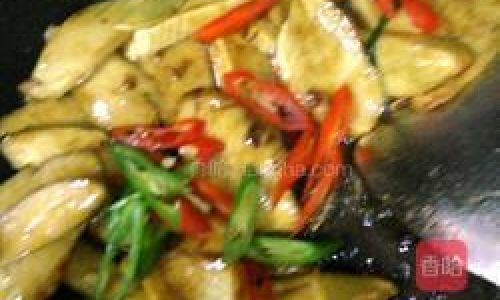
For the Tendon Preparation
- 1 lb (450g) beef tendon: Opt for fresh, pale-colored tendon with minimal fat.
- 4 cups (950ml) water: For boiling.
- 2 slices fresh ginger: To mellow any gaminess.
- 1 star anise pod: Adds a subtle, sweet aroma.
- 1 cinnamon stick: Infuses warmth and depth.
- 1 tbsp (15ml) Shaoxing wine: Eliminates impurities and enhances umami.
For the Marinade
- 2 tbsp (30ml) light soy sauce: For saltiness and color.
- 1 tbsp (15ml) dark soy sauce: Adds richness and depth.
- 1 tbsp (15g) cornstarch: Creates a silky coating.
- 1 tsp (5g) baking soda: Tenderizes the tendon (optional but recommended).
- 1 tbsp (15ml) vegetable oil: Prevents sticking during stir-frying.
For the Stir-Fry
- 3 tbsp (45ml) vegetable oil: Use a neutral oil with a high smoke point.
- 4 garlic cloves, minced: For pungent aroma.
- 2-inch (5cm) ginger, julienned: Adds zesty heat.
- 3-4 dried red chilies: Adjust to taste for spiciness.
- 1 medium onion, sliced: Provides sweetness and crunch.
- 1 bell pepper (any color), thinly sliced: Adds color and texture.
- 4-5 scallions, cut into 2-inch (5cm) segments: For fresh, grassy notes.
- 2 tbsp (30ml) chili bean paste (doubanjiang): The dish’s signature spicy-savory backbone.
- 1 tbsp (15ml) oyster sauce: Enhances umami.
- 1 tsp (5g) sugar: Balances saltiness and spice.
- 1 tbsp (15ml) sesame oil: For nutty finish.
- 1/4 cup (60ml) beef broth or water: Deglazes the pan and steams ingredients.
Garnish (Optional)
- 1 tbsp (5g) toasted sesame seeds: Adds visual appeal and crunch.
- Fresh cilantro leaves: For a bright, herbaceous note.
The Cooking Process: From Tough to Tender
Preparing the Tendon: Patience is Key
Beef tendon’s reputation for toughness is earned, but with the right technique, it becomes a culinary treasure. Begin by rinsing the tendon under cold water to remove any impurities. Cut it into bite-sized strips (approximately 2×1 inches/5×2.5cm) against the grain to ensure tenderness.
In a large pot, combine the tendon, water, ginger, star anise, cinnamon stick, and Shaoxing wine. Bring to a boil over high heat, then reduce to a gentle simmer. Cover and cook for 2-3 hours, or until the tendon is pliable but still retains a slight chew. Skim off any foam that rises to the surface during boiling.
Pro Tip: For a quicker method, use a pressure cooker. Cook under high pressure for 45-60 minutes, followed by a natural release.
Once tender, drain the tendon and discard the aromatics. Rinse under cold water to halt cooking, then pat dry with paper towels.
Marinating: Infusing Flavor
In a bowl, combine the cooked tendon strips with light soy sauce, dark soy sauce, cornstarch, baking soda (if using), and vegetable oil. Toss gently to coat each piece evenly. Marinate for at least 30 minutes at room temperature or up to overnight in the refrigerator. The cornstarch creates a protective layer, while the baking soda gently breaks down tough fibers.
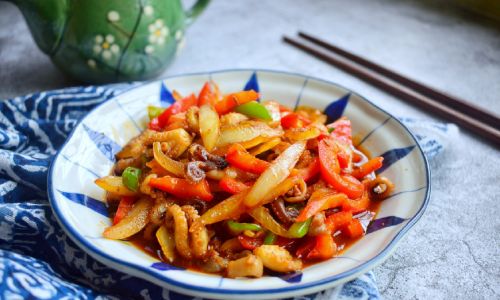
Stir-Frying: The Dance of Heat and Speed
Stir-frying demands precision and speed. Preheat your wok or large skillet over high heat until wisps of smoke rise. Add 2 tbsp (30ml) of vegetable oil and swirl to coat the surface.
Step 1: Sear the Tendon
Add the marinated tendon in a single layer, ensuring each piece makes contact with the hot wok. Sear for 2-3 minutes until lightly browned. This step caramelizes the exterior, locking in moisture and flavor. Remove the tendon and set aside.
Step 2: Sauté Aromatics
Reduce the heat to medium and add the remaining 1 tbsp (15ml) of oil. Toss in the garlic, ginger, and dried chilies. Stir-fry for 30 seconds until fragrant, taking care not to burn the garlic.
Step 3: Add Vegetables
Increase the heat to high and add the onion and bell pepper. Stir-fry for 2-3 minutes until slightly softened but still crisp. The vegetables should retain their vibrant colors and textures.
Step 4: Introduce the Flavor Base
Push the vegetables to one side of the wok and add the chili bean paste to the center. Toast the paste for 15-20 seconds to release its aromatic oils, then mix it into the vegetables.
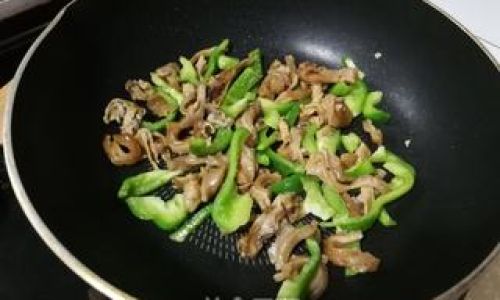
Step 5: Reunite with Tendon
Return the seared tendon to the wok, along with the oyster sauce, sugar, and beef broth. Toss vigorously to coat everything in the sauce. The broth will deglaze the pan, lifting any flavorful bits stuck to the surface.
Step 6: Final Flourish
Add the scallions and drizzle with sesame oil. Stir-fry for an additional 1-2 minutes until the scallions wilt slightly. The dish is ready when the sauce thickens and clings to the ingredients.
Serving Suggestions: Balancing Acts
Stir-fried beef tendon shines when paired with contrasting elements. Serve it over steamed jasmine rice to soak up the sauce, or alongside thin, slippery noodles for a hearty meal. For a complete feast, pair it with crispy spring rolls, pickled vegetables, and a cooling cucumber salad.
Wine Pairing: Opt for a light-bodied red wine like Pinot Noir, whose bright acidity cuts through the dish’s richness. For beer enthusiasts, a crisp lager complements the spiciness without overwhelming the palate.
Troubleshooting and Tips for Success
Tough Tendon Woes
If your tendon remains chewy, it likely needs longer cooking. Use a pressure cooker for faster results, or simmer for an additional hour. Avoid overcooking, as it can turn the tendon mushy.
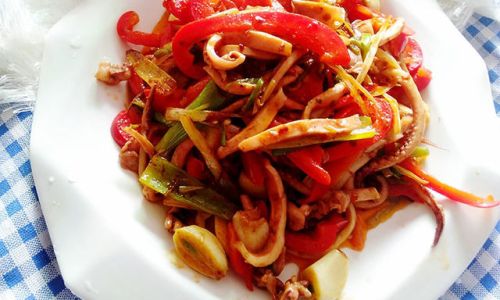
Balancing Spice Levels
Adjust the number of dried chilies to suit your heat tolerance. For a milder version, remove the seeds before adding them to the wok. A splash of rice vinegar at the end can also mellow the spiciness.
Preventing Sogginess
Ensure your wok is screaming hot before adding ingredients. Overcrowding the pan leads to steaming instead of stir-frying, resulting in limp vegetables and tendon. Cook in batches if necessary.
Vegetarian Adaptation
Substitute the beef tendon with king oyster mushroom stems or wheat gluten for a plant-based twist. Marinate and stir-fry as directed, adjusting cooking times as needed.
The Cultural Tapestry of Beef Tendon
In Chinese culinary history, tendon was a prized ingredient among laborers and farmers, who appreciated its energy-boosting properties. Today, it graces banquet tables and street food stalls alike, symbolizing resourcefulness and culinary ingenuity. The dish’s enduring popularity reflects a broader philosophy: transforming humble, overlooked ingredients into gastronomic delights.
Conclusion: A Symphony of Texture and Flavor
Stir-fried beef tendon is more than a meal—it’s a testament to the alchemy of cooking. By mastering the delicate balance of heat, time, and seasoning, you elevate a fibrous tissue into a dish that sings with umami, spice, and texture. Whether enjoyed as a weeknight dinner or a centerpiece at a gathering, this recipe invites you to savor the artistry of Chinese cuisine. So, gather your ingredients, fire up the wok, and embark on a flavorful adventure that transcends borders and expectations. Your taste buds—and your guests—will thank you.
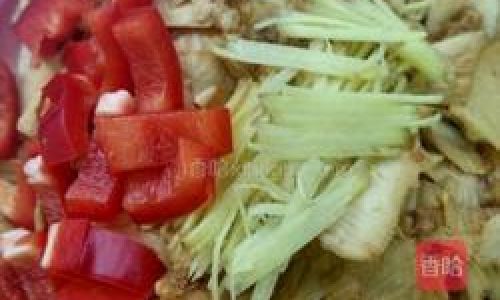
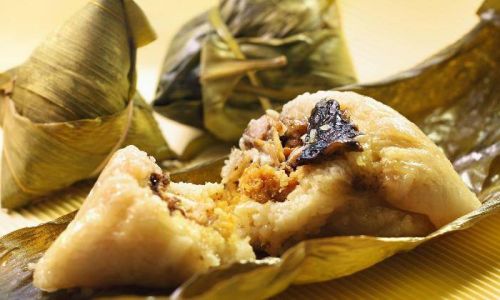

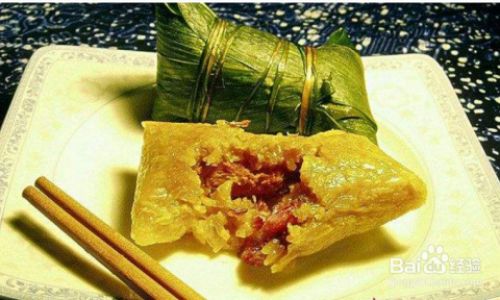
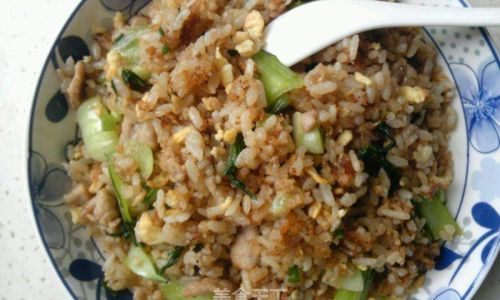

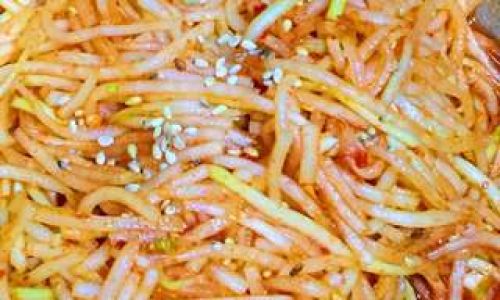
0 comments